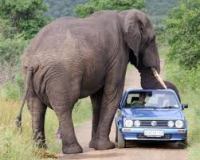I have been doing two completely incompatible things for the last month. I have been packing up all my stuff and moving it into storage. And I’ve been reading about American’s love affair with garbage, waste and consumerism in Garbology by Edward Humes. I should start by saying that I have a lot of stuff and that I love shopping. But I have come to the realization that short term retail therapy does not translate to long term happiness. That’s not to say I’ll never do retail therapy again. I’m sure I will. It just means that I’m trying to be more aware of what I buy, how useful it is, and how long it’s likely to take before I put it in the garbage. Waste as a vain attempt to be happier doesn’t make sense.
Edward Humes’ book is great. He clearly feels that our garbage system and our consumer culture are problems that need solutions, but a lot of the book talks about people who are working to find those solutions rather than blaming anyone for the system as it is. I am like most Americans who don’t really think about their trash beyond which day I need to put the bin on the curb. I try to recycle as much as I can. But I was aware that landfills are where most of our garbage ends up. Considering it’s a daily part of my life, that’s not knowing much. On average, according to Edward Humes, each American will generate about 102 tons of trash. I know that a ton is big and so 102 tons is huge, but I found it hard to conceptualize. So here’s a way to think about it:
 This elephant weights 6 tons. So we produce trash the weight (not the size) of 17 of those elephants. You can imagine, considering the weight of paper and thin plastic, that the actual size of all of that trash is much, much larger than 17 elephants.
This elephant weights 6 tons. So we produce trash the weight (not the size) of 17 of those elephants. You can imagine, considering the weight of paper and thin plastic, that the actual size of all of that trash is much, much larger than 17 elephants.
There is a lot I want to say about trash based on Humes’ book, but I don’t want to bore you and I don’t want to lecture you. So I’m going to make a few, succinct points that I hope will keep you thinking about your trash, how much it is, and where it ends up.
A lot of trash, and especially plastic, ends up in the ocean. The biggest spot is in the Pacific and most people have heard about that. What we haven’t heard is that plastic breaks down into tiny little pieces that are now all over the ocean and the beaches of the world. Pieces tiny enough for even the smallest fish to ingest.
While we usually feel like we’re doing a good thing when we recycle, most recycled goods spend a lot of energy being moved from place to place to a recycling center which uses energy to recycle – mostly are downcycled into materials of lower value that can’t be recycled again.
Trash in landfills that can decompose, doesn’t. Food, yard waste, and things that I don’t feel bad about throwing in the trash, actually last a long time in a landfill. They might decompose if exposed to sun and wind, but trapped in the middle of tons of trash, they last decades.
I’m going to follow up this post with one that includes suggestions from the book, and a few from me, about how to create less waste and maybe put a dent in your 102-ton legacy.
